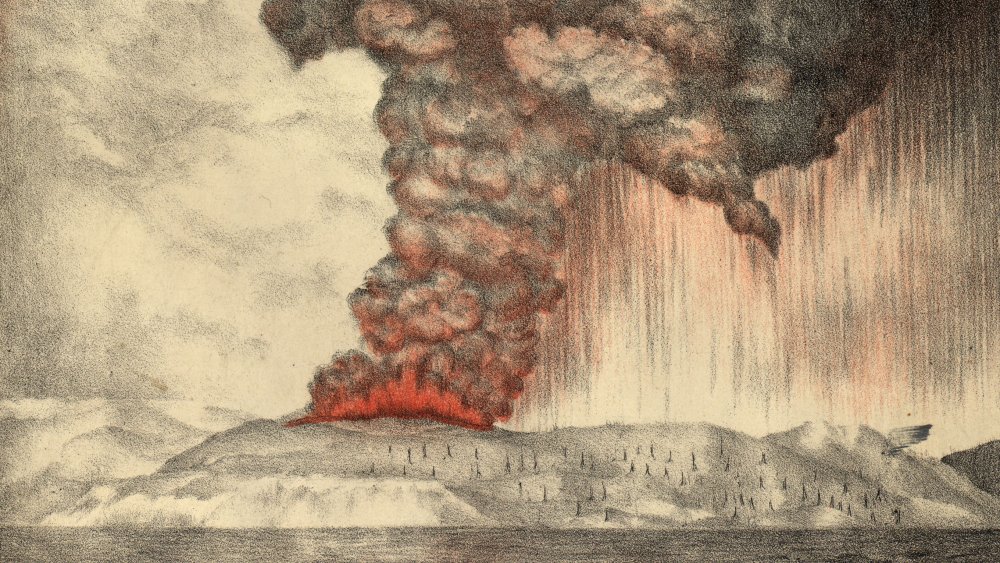The Truth About The Loudest Sound Ever Heard
"Where's the kaboom? There was supposed to be an Earth-shattering kaboom!" said Marvin the Martian after Bugs Bunny foiled his plan to destroy the Earth (it obstructed Marvin's view of Venus). There have been plenty of kabooms over the years — some have been witnessed, some haven't (Big Bang, anyone?); but in recorded history, one event stands out for sonic impact: the eruption of the volcano that made up the Island of Krakatoa (or Krakatau, depending who you ask) in August 1883.
The island, about five miles long and three miles wide, says The Atlantic, lay near Indonesia, between Java and Sumatra. It was uninhabited at the time, though readily observed by passengers and crews of ships passing nearby through the Sunda Strait. And observe they did: on May 20, personnel on a German warship, the Elizabeth, passing by noted a tall plume of ash and dust over the island, estimated to be seven miles high, says History. Others passing by in the days to come made note of loud rumblings and "incandescent clouds" from the island, reports Live Science. It was a sort of natural fireworks display over the island, and people on nearby islands were impressed and celebrated the phenomenon. Until August.
Just before 1 p.m. on Sunday, August 26, was the start of something big. An initial explosion occurred that threw a cloud of debris and gas into the air. The next day, however. there really was an Earth-shattering kaboom.
Vegetation was lush on Krakatoa
The Earth — Krakatoa in particular — shattered in a way not recorded before and not seen since. The explosion was heard throughout the region and as far away as Perth, Australia — 2,800 miles distant. Discover Magazine explains it this way: "What we're talking about here is like being in Boston and clearly hearing a noise coming from Dublin, Ireland." The sound ruptured the eardrums of sailors 40 miles distant. Essentially, says Discover, "the atmosphere was ringing like a bell."
Krakatoa exploded with a force equivalent to 200 megatons of TNT. (By way of comparison, it was 10,000 times the force of the bomb dropped on Hiroshima in 1945.) An estimated 11 cubic miles of debris were hurled 50 miles into the atmosphere. The skies were darkened for hundreds of miles, and daylight didn't reappear locally for three days.
The blast was bad, but the real damage occurred from the resulting tsunamis — walls of water, some as much as 120 feet high. About 36,000 people died, with whole villages swept away to sea. Others were scorched to death by the pyroclastic flows that rolled over the ocean for as much as 40 miles. And according to Live Science, average global temperatures dropped as much as 1.2 degrees for the next five years.

